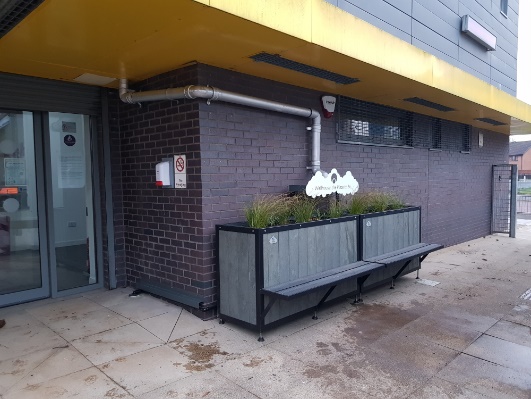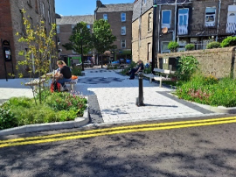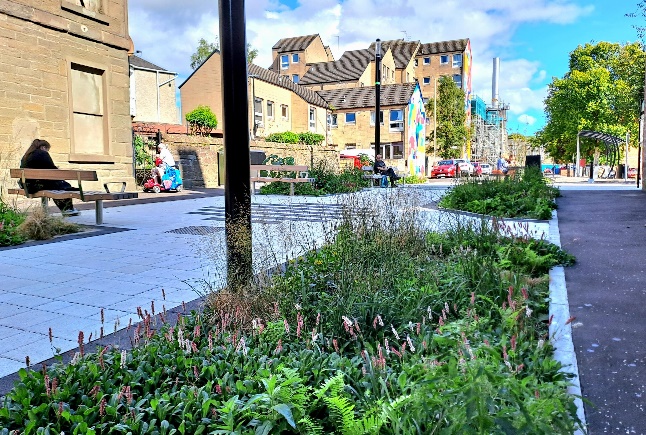Water, wastewater and drainage policy: consultation
This consultation seeks your views on our proposed principles and considerations in developing policy for the future of the water industry in Scotland in response to the climate emergency.
4. Drainage of rainwater
In Scotland[5] wastewater[6] from homes and businesses is collected by a network of public sewers[7] (also known as sewerage) and is treated at wastewater treatment works where it is cleaned, treated and returned safely to the environment (rivers, lochs and the sea). Most of the sewer pipes are ‘combined sewers’. This means that one pipe collects sewage from our homes and businesses (toilets, sinks, showers, baths etc) and rainwater from roofs and paved areas around properties. Many roads, especially in our towns and cities, also drain into the combined sewer network. In some parts of Scotland there are separate systems for sewage and drainage.
The changing climate means we are seeing more extreme weather events such as periods of very heavy and/or intense rainfall which can lead to spills from drainage systems to the environment and/or cause flooding to homes and businesses. We need to make greater changes in the way we manage the consequences of extreme weather events as their frequency increases.
The increased area of ‘hard surfaces’ from new developments, roads and pavements, plus paving over of gardens for driveways and patios, as well as replacing grass with artificial alternatives, means when it rains more rainwater runs off these hard surfaces and down the drains more quickly than it would on natural surfaces like grassed areas. With the combination of changing rainfall patterns and more hard surfaces, it has become more important than ever to collect and manage rainwater in a way that can easily be adapted to current and future conditions.
Building bigger sewers to accommodate this increased rainfall is disruptive and expensive and is not always the best solution. Unlike sewage, rainwater doesn’t need to be taken to a wastewater treatment works for treatment. We need to keep rainwater close to where it falls, ensure that it takes longer to get into drains and sewers, and where possible drain it directly to a river or the sea. There is also the opportunity to collect it in a way that means it could be used such as a resource for watering green spaces, gardens or to support hydrogen production.
We need to take a combination of actions, both large and small, to better manage rainwater, and to reduce the risk of flooding and spills from combined sewer overflows into the water environment. This means bigger pipes (known as “grey infrastructure”) where necessary, but also installing water butts, building raingardens, ponds, basins, wetlands, and increasing the areas of green spaces within the built environment that can absorb rainfall and prevent it from ever entering the wastewater system, as well as providing attractive features that enhance public amenity and support greater biodiversity. These networks of natural and semi-natural features are often known as “blue-green infrastructure”.



Blue-green infrastructure helps to ensure that our wastewater and drainage networks can work properly and brings other benefits to our towns and cities. They enhance our neighbourhoods by providing attractive places that support nature where we can spend our leisure time. They also offer other benefits such as providing shade in hot weather and improving air and water quality.
We have made some progress already in Scotland. Since 2003, all new developments must install basins and ponds to drain rainwater, more commonly known as Sustainable Urban Drainage System (SUDS). In addition, to protect the current combined sewer network, Scottish Water does not allow new rainwater drainage connections to be made to it unless there is no alternative.
Currently a SUDS pond is built for each development. After 20 years of experience we have learned that we need to improve how we deliver SUDS and make these parts of blue-green infrastructure networks so they can serve a bigger area and manage more rainwater.
We need to better plan and fund our drainage services to be able to cope with more rainwater and avoid the much greater costs associated with the impacts of flooding on our communities. We need to ensure that the drainage of rainwater separately from wastewater is seen as a vital service that is planned for when we consider how land should be used and what services will be needed – like we already do for water and wastewater. We need to consider how we can bring blue-green infrastructure into existing communities by making the best of our existing greenspace whether they are small or large to help us manage rainwater. We also need to take all opportunities to bring in new blue-green infrastructure and reduce our hard surfaces, for example, by introducing rain gardens at the street scale and replacing paved areas such as driveways with permeable surfaces.
It is necessary to ensure that any new infrastructure to collect and manage rainwater is delivered efficiently, effectively and are designed and built to drain both new developments and existing urban areas. To do this they need to be planned and built in partnership with Local Authorities, Scottish Water, developers, landowners, communities and other partners. This will also ensure that they are operated and maintained so they continue to work properly over the long term. It is also necessary to consider how blue-green infrastructure can be located in places to deliver wider benefits that green spaces bring to future and existing communities and the environment.
Questions
14. Who do you think has a role in changing how we manage rainwater in Scotland to adapt to the impacts of climate change? (Please select all that apply)
- Individuals,
- Homeowners,
- Businesses,
- Scottish Government,
- Scottish Water,
- Local Authorities,
- Scottish Environment Protection Agency (SEPA),
- Land owners,
- Farmers,
- House builders,
- Community groups
- Others [Free Text]
15. To what extent do you agree that you/your organisation have/has a role in changing how we manage rainwater in communities to adapt to the impacts of climate change?
- Strongly agree
- Agree
- Neither agree nor disagree
- Disagree
- Strongly disagree
16. What would you/your organisation be willing to do in your home/property to manage rainwater differently? For example, disconnect your down pipes from the sewer, have permeable driveways, install water butts and/or rain gardens.
- [Text box]
17. Would you know where to find information on how to best manage rainwater in your property?
- Yes / no
18. To what extent do you agree that there is a need to plan, build, maintain and make room for drainage infrastructure to better manage rainwater in our villages, towns and cities?
- Strongly agree
- Agree
- Neither agree nor disagree
- Disagree
- Strongly disagree
19. What should Scotland’s drainage systems look like in the future?
- Grey infrastructure only (drains, pipes, tanks)
- Blue-green infrastructure (rain gardens, green roofs, SUDS ponds, basins, wetlands, swales, etc)
- A combination of both grey and blue-green infrastructure
20. Do you have any further views on how Scotland should manage rainwater in the future?
- [Free Text]
Contact
Email: waterindustry@gov.scot
There is a problem
Thanks for your feedback